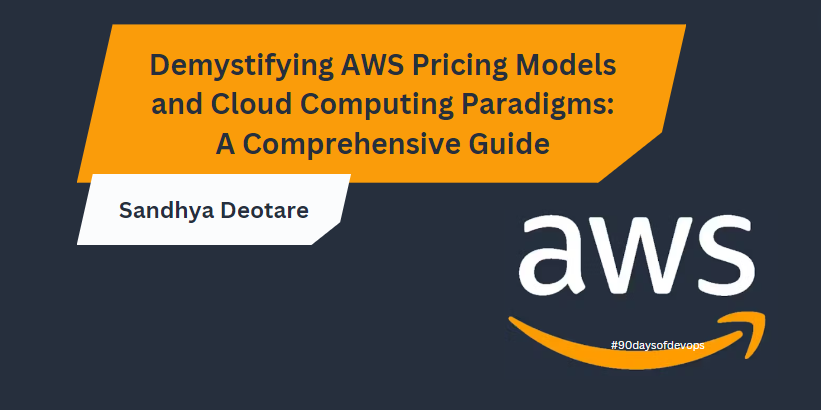Demystifying AWS Pricing Models and Cloud Computing Paradigms: A Comprehensive Guide
 Sandhya Deotare
Sandhya Deotare
In today's digital era, cloud computing has become the cornerstone of modern business infrastructure, and Amazon Web Services (AWS) stands as a titan in this realm. Understanding AWS pricing models and cloud computing paradigms is crucial for optimizing costs and selecting the right environment for your applications. Join us as we embark on a journey through the intricacies of AWS and cloud computing.
Understanding AWS Pricing Models
AWS offers a plethora of pricing models tailored to diverse needs, ranging from startups to large enterprises. Let's explore some of these models:
1. On-Demand Instances:
Pay-as-you-go model.
Ideal for unpredictable workloads and short-term projects.
2. Reserved Instances:
Offers significant cost savings compared to On-Demand pricing.
Users commit to a term of one or three years to lock in discounted rates.
3. Spot Instances:
Users bid for unused AWS capacity, offering potentially significant savings.
Instances can be terminated if capacity is needed elsewhere.
4. Savings Plans:
Provides a commitment to a consistent amount of usage for a 1 or 3-year period.
Offers a blend of flexibility and cost savings.
Decoding Cloud Computing Models: On-Premises, On-Cloud, and Hybrid
Transitioning from traditional on-premises infrastructure to cloud computing involves navigating through different models:
1. On-Premises:
Traditional model involving hosting all data and applications on-site.
Provides complete control but demands substantial upfront investments.
2. On-Cloud:
Leverages third-party services like AWS.
Offers scalability, flexibility, and cost-effectiveness.
3. Hybrid Cloud:
Integrates both on-premises and on-cloud solutions.
Provides flexibility while leveraging the scalability of the cloud.
Navigating IAAS, PAAS, and SAAS with Real-World Examples
Cloud services come in different layers of abstraction:
1. Infrastructure as a Service (IAAS):
Delivers virtualized computing resources over the internet.
Example: AWS EC2 instances.
2. Platform as a Service (PAAS):
Provides a platform for developing, running, and managing applications.
Example: AWS Elastic Beanstalk.
3. Software as a Service (SAAS):
Delivers software over the internet without installation.
Example: AWS WorkMail.
Unraveling the History of AWS
Understanding the historical context of AWS is crucial:
1. The Genesis (2006):
- AWS launched with services like S3 and EC2, laying the foundation for cloud computing.
2. Expanding Horizons (2010s):
- AWS introduced a myriad of services catering to diverse use cases.
3. Global Dominance (2020s):
- AWS continued its global expansion, bridging the gap between on-premises and cloud environments.
Conclusion: Embark on Your AWS Odyssey
Armed with knowledge about AWS pricing models, cloud computing paradigms, and the rich history of AWS, you're well-equipped to navigate the cloud landscape. Each day brings new insights and skills, so stay tuned for tomorrow's exploration into AWS services and their potential to revolutionize your projects. Let's embark on this AWS odyssey together! 🚀🌐
Subscribe to my newsletter
Read articles from Sandhya Deotare directly inside your inbox. Subscribe to the newsletter, and don't miss out.
Written by
